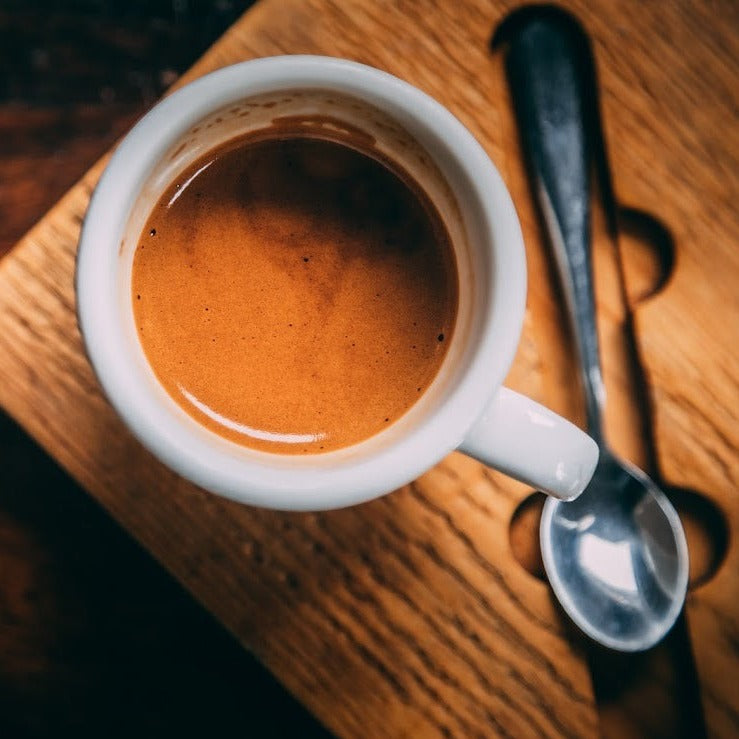A First-Time User’s Guide to Understanding SOE Single Origin Espresso
A First-Time User’s Guide to Understanding SOE Single Origin Espresso
Blog Article
Understanding Coffee Beans: the Trip From Coffee to Blended Coffee Beans

The Beginnings of Coffee: A Worldwide Perspective
While you could think about coffee as a modern-day staple, its beginnings map back centuries, linking with societies around the world. The tale starts in Ethiopia, where legend states a goat herdsman named Kaldi uncovered the invigorating effects of coffee beans after noticing his goats romping vigorously after eating them. This sparked rate of interest, resulting in coffee's infect Arab traders who cherished the made beverage. By the 15th century, it got to Persia, Egypt, and Turkey, where coffee shops came to be social hubs for conversation and culture.
As profession courses broadened, coffee made its method to Europe in the 17th century, quickly gaining popularity. It transformed from a mystical beverage right into a day-to-day routine, motivating gatherings and intellectual exchanges. Each culture added its distinct twist to coffee preparation, enriching its background. This international trip highlights just how coffee connects us, going beyond borders and uniting varied traditions through a basic bean.
Growing and Harvesting of Espresso Beans
As coffee's journey developed, the focus moved to the growing and harvesting of particular bean ranges, especially those utilized for espresso. You'll discover that espresso beans commonly originate from Arabica or Robusta plants, each offering distinctive tastes. The excellent expanding problems consist of high altitudes and rich, well-drained soil, which enhance the beans' quality.
Throughout the harvest, selecting approaches differ. In some areas, workers hand-pick ripe cherries, guaranteeing only the very best fruit mosts likely to handling. In other areas, mechanical farmers are made use of, particularly on larger ranches. Timing is essential; you intend to gather when the cherries reach peak perfection for maximum flavor.
As soon as gathered, the beans are prepared for handling, which is necessary in identifying their final preference. Understanding the farming and gathering processes offers you insight right into what goes right into your favorite coffee, enhancing your appreciation for each and every mug.
Processing Methods: From Cherry to Bean
Currently that you've discovered collecting coffee beans, allow's explore how those cherries change into the coffee beans you like. You'll see how various harvesting strategies effect taste, complied with by the essential actions of fermentation and drying. We'll damage down the milling and grading procedure that determines your coffee's top quality.
Harvesting Methods Explained
When it involves coffee, understanding harvesting methods is essential, considering that they straight impact the taste and high quality of the beans you enjoy. There are two main approaches: selective picking and strip selecting. Discerning selecting involves hand-picking only ripe cherries, ensuring you obtain the ideal quality beans. This method commonly brings about a richer flavor profile, though it's more labor-intensive. On the other hand, strip choosing methods collecting all cherries at once, regardless of ripeness. While it's quicker and more affordable, this can cause a mix of flavors, affecting the final product. Eventually, the selection of collecting method can greatly affect your coffee experience, so it deserves recognizing exactly how those beans made it to your mug.
Fermentation and Drying Out
After collecting, the following actions in processing coffee beans play a significant role in forming their taste. You'll discover that fermentation is important, as it helps damage down the mucilage bordering the beans, improving their taste account. Relying on the technique, this process can last from a couple of hours to numerous days, with varying results based upon temperature level and humidity.
As soon as fermentation is full, drying complies with, which is equally vital. You can select from mechanical or sun-drying drying approaches. Sun-drying enables the beans to absorb tastes from the atmosphere, while mechanical drying warranties constant dampness degrees despite climate. Appropriate drying out is important to prevent mold and mildew and preserve the beans' top quality, eventually influencing your mug of coffee.
Milling and Grading Refine
As fermentation and drying out established the phase for taste development, the milling and grading process guarantees that only the finest coffee beans make it to your mug. This phase involves getting rid of the external layers of the coffee cherry, consisting of the parchment and husk. Top quality beans get a higher grade, resulting in a richer coffee experience.
Roasting Techniques: Unlocking Flavor Potential
When you roast coffee beans, the method you choose can considerably influence the taste account. Comprehending the connection between time, temperature, and roasting techniques is essential to revealing the potential of your brew. Allow's explore how these elements integrated to create the perfect cup.
Roasting Methods Described
While you may believe that all coffee toasting approaches produce the exact same results, the fact is that each strategy exposes distinct flavor potentials in the beans. You can select between methods like drum toasting, air roasting, or perhaps standard pan roasting. Drum roasting makes use of a revolving drum to uniformly disperse heat, boosting caramelization and generating a well balanced taste. Air roasting, on the other hand, flows warm air around the beans, advertising a lighter roast with obvious level of acidity. Pan toasting enables hands-on control but calls for continuous attention to stay clear of burning. Each technique has its nuances, so try out different strategies can assist you discover the excellent roast that lines up with your preference preferences. Enjoy the trip of finding your perfect mug!

Influence on Flavor Profile
Various toasting methods not just affect the process however additionally considerably influence the flavor profile of the coffee beans. When you select a light roast, you'll experience intense acidity and floral notes, showcasing the bean's beginning. On the other hand, a medium roast balances level of acidity with sweetness, commonly disclosing chocolatey undertones. Dark roasts, on the other hand, highlight bold, great smoky tastes, in some cases covering up the bean's distinct characteristics. Each method discloses different oils and substances, leading to a vast array of tastes. By try out numerous toasting designs, you can uncover which accounts resonate with your palate. Understanding these nuances assists you appreciate the creativity behind your mug of coffee, improving your general experience with every sip.
Time and Temperature Elements
To release the full taste capacity of coffee beans, both time and temperature during the roasting procedure play substantial duties. When toasting, you'll locate that higher temperatures can swiftly develop tastes, but if you hurry it, you might end up with burned notes. On the other hand, reduced temperatures enable an extra gradual flavor growth, showcasing the beans' one-of-a-kind characteristics.

Timing is just as important; extending the roast too long can lead to a loss of acidity and illumination, while as well visit homepage short a roast might leave the beans underdeveloped. Locating that wonderful spot needs practice and experimentation. By readjusting these aspects, you can reveal the rich, intricate flavors concealed within each bean, producing a truly exceptional coffee experience.
The Art of Blending: Crafting One-of-a-kind Coffee Profiles

Beginning by selecting a base coffee that provides a strong structure. Pick complementary beans to enhance certain taste notes. A bright Ethiopian bean can bring fruitiness, while a rich Brazilian coffee adds body. Trial and error is key-- don't be scared to change proportions up until you locate your suitable account.
As you blend, maintain in mind that each mix informs a tale. You're not simply making coffee; you're developing an experience. So, take your time, taste frequently, and delight in the journey of finding your trademark mix.
Developing Methods: How Preparation Affects Taste
Blending coffee opens up a domain name of flavor opportunities, however how you make that blend can substantially influence your last cup. On the other hand, a pour-over highlights the coffee's clearness and brightness, excellent for showcasing fragile notes.
Espresso, with its high pressure, generates a concentrated shot that emphasizes sweetness and crema. If you prefer a lighter mixture, consider a cool brew technique; it yields a smooth, less acidic preference.
Adjusting variables like water temperature, grind dimension, and brew time can transform your coffee's account. Welcome the art of brewing to find the tastes concealed in your coffee blends.
The Future of Coffee: Sustainability and Development
As the coffee sector evolves, sustainability and development are coming to be important for resolving environmental difficulties and conference customer needs. You'll notice that more coffee business are taking on environmentally friendly methods, from sourcing beans morally to executing sustainable farming strategies. These changes not only assist the planet however additionally boost the high quality of the coffee you take pleasure in.
You might see website link technologies like naturally degradable product packaging and water-saving developing approaches that decrease waste. Advanced innovation, such as blockchain, is additionally coming to be popular, guaranteeing transparency in the supply chain, which enables you to trace your coffee back to its origins.
Additionally, purchasing regional neighborhoods and supporting farmers through fair trade initiatives fosters a more lasting coffee ecosystem. As you sip your next mug, keep in mind that your choices can contribute to a brighter future for coffee. By choosing lasting brand names, you're not just delighting in a beverage; you're making a positive effect on the world.
Often Asked Concerns
What Is the Distinction Between Arabica and Robusta Beans?
Arabica beans are smoother, sweeter, and have a greater level of acidity, while robusta beans are stronger, extra bitter, and consist of more caffeine. When brewing your coffee., you'll see these differences in taste and scent.
How Does Elevation Affect Coffee Bean Flavor?
Elevation impacts coffee bean taste significantly. Greater elevations produce beans with brighter acidity and complex tastes, while lower elevations typically yield beans that are larger and less nuanced. You'll see these differences in your mug!
What Are the Health And Wellness Advantages of Alcohol Consumption Coffee?
Consuming coffee can increase your power, enhance mental emphasis, and even boost physical efficiency. It's rich in anti-oxidants, may decrease the risk of particular conditions, and can promote a healthier metabolism when eaten in moderation.
Can Coffee Beans Be Recycled for Developing?
Yes, you can reuse coffee beans for developing, however the flavor could be weak. If you enjoy trying out, try recycling them in different methods, like cold mixtures or contributing to shakes for an extra kick.
Exactly how Should I Shop Coffee Beans for Quality?
To keep your coffee beans fresh, store them in a closed container in a cool, dark location. Prevent revealing them to light, warm, or dampness, as these variables can rapidly weaken their flavor and scent.
Recognizing Coffee Beans: the Trip From Espresso to Blended Coffee Beans.
Now that you have actually found out regarding collecting espresso beans, allow's check out just how those cherries transform right into the coffee beans you love.When you roast coffee beans, the technique you select can significantly impact the flavor account - Single Origin Espresso.While you could assume that all coffee toasting approaches produce the exact Visit This Link same outcomes, the reality is that each method exposes distinct flavor capacities in the beans.Different roasting techniques not only influence the process but likewise substantially affect the flavor profile of the coffee beans
Report this page